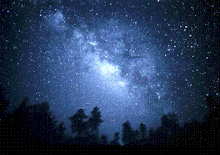Many asteroids are comets
--post by SMK KEAT HWA ASTRONOMY SOCIETY
PARIS - MANY of the primitive bodies wandering the asteroid belt between Mars and Jupiter are former comets, tossed out of orbit by a brutal ballet between the giant outer planets, say a team of astrophysicists.
A commonly accepted theory is that the asteroid belt is the rubble left over from a 'proto-planetary disk,' the dense ring of gas that surrounds a new-born star. But the orbiting rocks have long been a source of deep curiosity. They are remarkably varied, ranging from mixtures of ice and rock to igneous rocks, which implies they have jumbled origins.
The answer to the mystery, according to a study published by the British journal Nature on Wednesday, is that a 'significant fraction' of the asteroid population in fact comprises ex-comets.
Famously described as 'dirty snowballs' of ice and dust, comets are lonely, long-distance wanderers of the Solar System whose elliptical swing around the Sun can take decades.
Famously described as 'dirty snowballs' of ice and dust, comets are lonely, long-distance wanderers of the Solar System whose elliptical swing around the Sun can take decades.
Researchers in France and the United States ran a mathematical model of the development of the early Solar System, when the planets were accreting from clustering masses of dust and gas.
According to this model, the nascent giant planets - Jupiter, Saturn, Uranus and Neptune - orbited at this time in a pretty compact configuration, between five and 15 astronomical units (AUs) from the Sun.
An AU is a standard unit of measurement for Solar System distances. It equals the distance from the Earth to the Sun, or around 150 million km. Beyond the giant planets was a disk-shaped mass of comets, known as trans-Neptunian objects, between 16 and 30 AUs from the Sun.
As the giants became bigger and bigger, their orbits became unstable. Eventually, after around 600 million years, Uranus and Neptune were kicked out by gravitational jousting.
They rammed into the disk of comets and scattered its members throughout the Solar System, according to this model. Many of them were captured by the weak gravitational force of the asteroid belt, where they remain to this day.
'It's a paradigm shift,' said Matthieu Gounelle of France's National Centre for Scientific Research (CNRS) in a press release. 'The asteroid belt is not just a leftover from the formation of the Solar System, but also that of violent phenomena' including the great planetary migration.
If the model is right, it implies that the difference between the most primitive asteroids and comets is even slimmer than thought. It would also shed light on the controversial origin of micrometeorites, or tiny extraterrestrial particles that survive the fiery passage through Earth's atmosphere.
Micrometeorites are different from meteorites in composition and texture, and this could be explained if they derive from comets, which are richer in organic material and crumblier than native asteroids. -- AFP















_-_09_February_2009.jpg)

.jpg)


